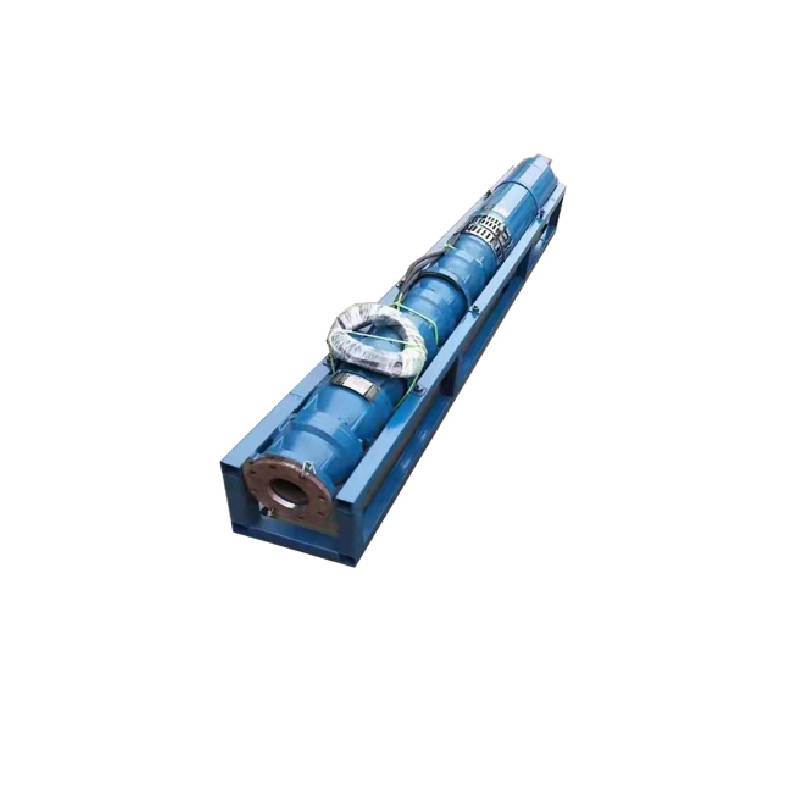Dec . 01, 2024 09:46 Back to list
Common Issues and Solutions for Submersible Pump Performance Problems
Submersible Pump Troubleshooting A Comprehensive Guide
Submersible pumps are widely used in various applications, from residential drainage to industrial and agricultural operations. These pumps are designed to operate underwater, making them highly effective in moving water and other fluids. However, like any mechanical system, submersible pumps can encounter issues that may cause them to malfunction. This article will provide a comprehensive guide to troubleshooting common problems associated with submersible pumps.
1. Understanding the Basics
Before diving into troubleshooting, it’s essential to understand how submersible pumps work. These pumps are sealed units that are submerged in the fluid they are meant to pump. They consist of a motor, impeller, and volute casing. The motor drives the impeller, which creates a pressure differential that moves the fluid through the discharge pipe.
2. Common Problems and Solutions
a. No Power or Pump Won't Start
One of the first issues you may encounter is a lack of power or an inability for the pump to start. This can occur due to several reasons - Power Supply Failure Check if the pump is receiving power. Inspect the circuit breaker and fuses for any signs of malfunction. - Control Switch Malfunction The control switch may be faulty, preventing the pump from starting. Ensure that the switch is functioning correctly. - Wiring Issues Inspect the wiring for any signs of damage or disconnection. Replacing damaged wires often resolves this issue.
b. Pump Runs but Doesn't Pump Water
If the pump is running but not moving water, it could be due to - Clogged Intake Inspect the intake screen for any debris or obstructions that may prevent water from flowing into the pump. Clean or replace the intake screen as necessary. - Air Lock An air lock can occur if the pump is not priming correctly. This can be solved by removing the pump and ensuring there are no air pockets in the system. - Impeller Damage A damaged impeller can result in poor performance. Remove the pump from the well and inspect the impeller for any wear or breakage.
submersible pump troubleshooting

c. Pump Running Intermittently
Intermittent operation can be frustrating and typically arises from - Float Switch Issues If the pump uses a float switch, check to ensure it isn’t stuck in the 'off' position. Cleaning or replacing the float switch may resolve this issue. - Power Supply Fluctuations Fluctuations in power supply can cause the pump to run erratically. Consider using a voltage stabilizer to maintain consistent power levels.
d. Overheating
Overheating is a serious issue that can damage the pump. Causes may include - Continuous Operation Operating the pump continuously for extended periods can lead to overheating. Implement a timer or a pressure switch to regulate operation times. - Lack of Cooling Fluid Ensure there is adequate water in the well or reservoir. Low fluid levels can cause the pump to run dry, leading to overheating.
3. Routine Maintenance
Preventative maintenance is essential for keeping your submersible pump operating efficiently. Regularly check and clean the intake screen, inspect electrical connections, and ensure that the motor is free of debris. Additionally, consider scheduling professional inspections annually to catch any potential issues early.
4. Conclusion
Troubleshooting submersible pumps requires a methodical approach to identify and resolve issues efficiently. By understanding the common problems and their solutions, as well as practicing routine maintenance, users can extend the lifespan of their pumps and ensure optimal performance. Always remember, when in doubt, consulting a professional can save time and prevent potential damage.
-
Submersible Water Pump: The Efficient 'Power Pioneer' of the Underwater World
NewsJul.01,2025
-
Submersible Pond Pump: The Hidden Guardian of Water Landscape Ecology
NewsJul.01,2025
-
Stainless Well Pump: A Reliable and Durable Pumping Main Force
NewsJul.01,2025
-
Stainless Steel Submersible Pump: An Efficient and Versatile Tool for Underwater Operations
NewsJul.01,2025
-
Deep Well Submersible Pump: An Efficient 'Sucker' of Groundwater Sources
NewsJul.01,2025
-
Deep Water Well Pump: An Efficient 'Sucker' of Groundwater Sources
NewsJul.01,2025
-
 Submersible Water Pump: The Efficient 'Power Pioneer' of the Underwater WorldIn the field of hydraulic equipment, the Submersible Water Pump has become the core equipment for underwater operations and water resource transportation due to its unique design and excellent performance.Detail
Submersible Water Pump: The Efficient 'Power Pioneer' of the Underwater WorldIn the field of hydraulic equipment, the Submersible Water Pump has become the core equipment for underwater operations and water resource transportation due to its unique design and excellent performance.Detail -
 Submersible Pond Pump: The Hidden Guardian of Water Landscape EcologyIn courtyard landscapes, ecological ponds, and even small-scale water conservancy projects, there is a silent yet indispensable equipment - the Submersible Pond Pump.Detail
Submersible Pond Pump: The Hidden Guardian of Water Landscape EcologyIn courtyard landscapes, ecological ponds, and even small-scale water conservancy projects, there is a silent yet indispensable equipment - the Submersible Pond Pump.Detail -
 Stainless Well Pump: A Reliable and Durable Pumping Main ForceIn the field of water resource transportation, Stainless Well Pump has become the core equipment for various pumping scenarios with its excellent performance and reliable quality.Detail
Stainless Well Pump: A Reliable and Durable Pumping Main ForceIn the field of water resource transportation, Stainless Well Pump has become the core equipment for various pumping scenarios with its excellent performance and reliable quality.Detail
